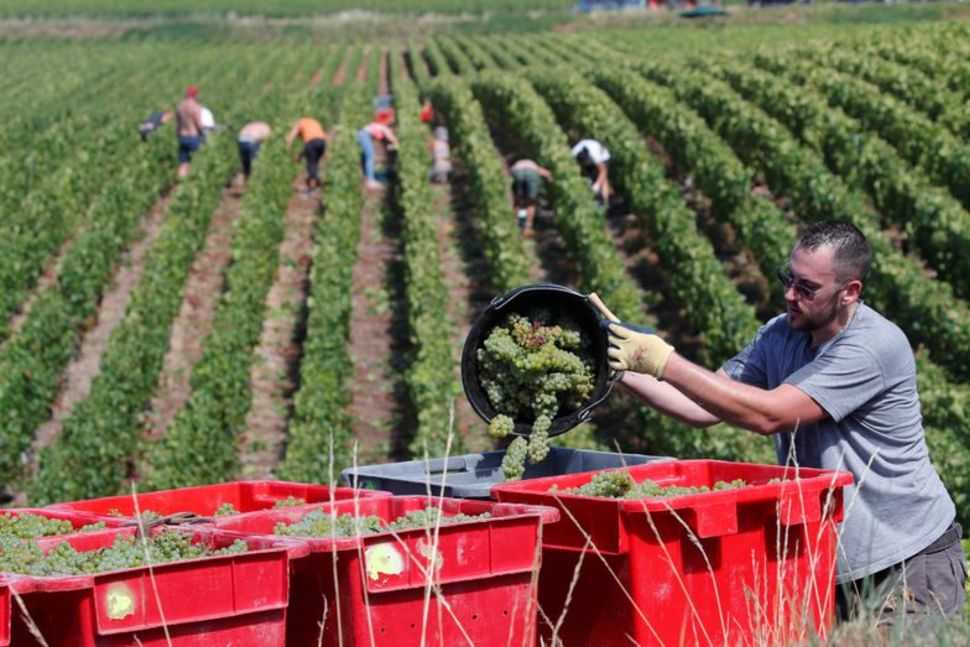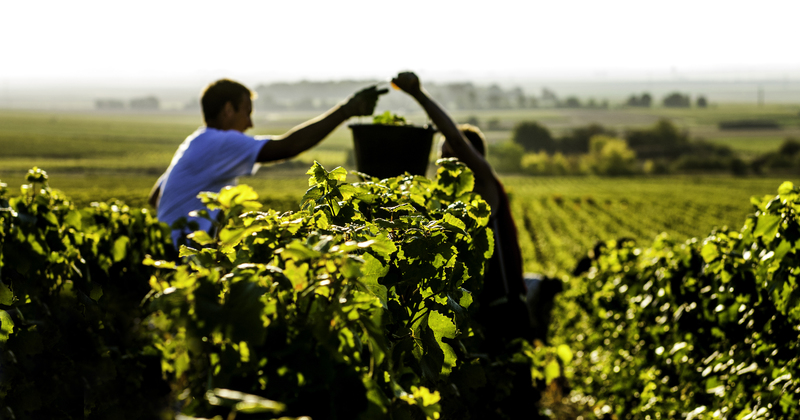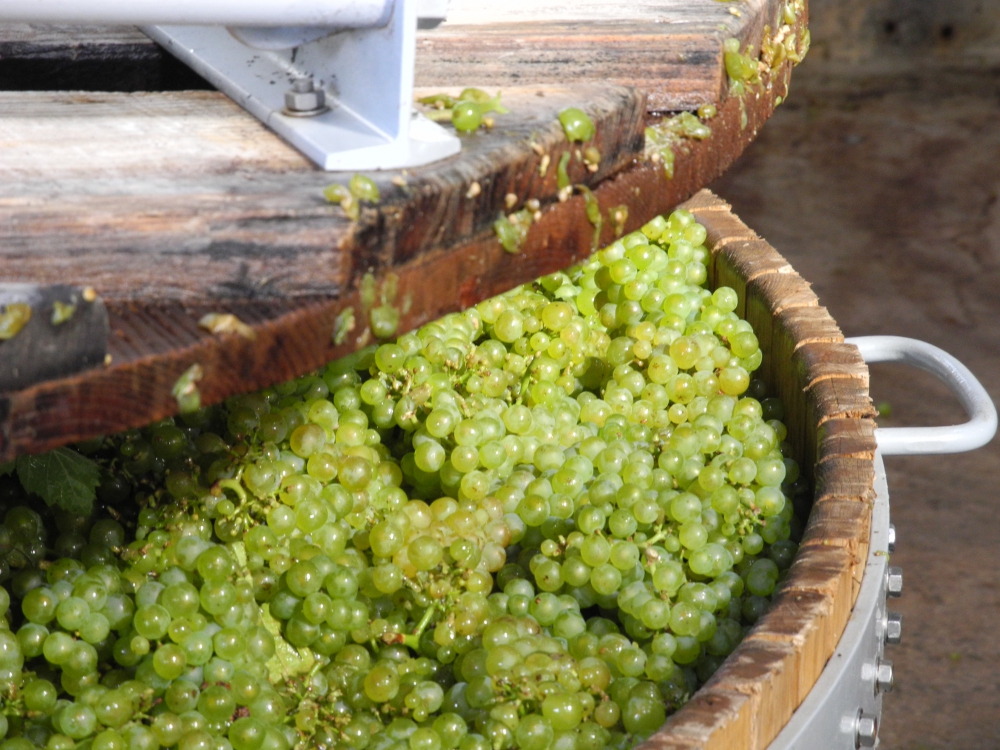2020 completes an exceptional trilogy for the harvest: as in 2018 and 2019, the weather conditions have offered a very high-quality harvest, which is one of the requirements to make a great wine. The beginning of the year was particularly wet with the dampest February on record. Heat and drought set in mid-March and the vines were 16 days ahead on a 10-year average; it will not lose this edge, even registering an exceptionally fast maturation process the week before the harvesting.
While last year’s temperature record was broken (42.9°C), this year it was the driest July in history. Due to the drought, the grapes are of a lighter weight than average but in excellent sanitary condition. The musts are well balanced, fruity, with a beautiful freshness and a great aromatic expression; the alcoholic degree lies between 10 and 10.5% vol.
The year 2020 is, of course, characterized by the health safety measures linked to the Covid-19 epidemic, which had to be put in place for the 120.000 seasonal workers recruited in vineyards or pressing centres.
Given the maximum yield limited to 8,000 kg/ha, the harvest was carried out, individually, a little faster than usual but spread over a normal period of about three weeks, given the heterogeneity of maturation between vintages and grape varieties. The tasting of berries and seeds and the analysis of the sugar content present in the grapes allow each winemaker to adapt the beginning of his harvest and optimize his grape picking circuit, plot by plot, at optimum maturity.
With the superb trilogy 2018, 2019, 2020, Champagne should have in a few years blends and, probably, exceptional vintages, all living up to the celebrations of the event that the whole world is waiting for: the end of the Covid-19 pandemic.
French Version
′′2020 complète en effet une trilogie exceptionnelle : comme en 2018 et en 2019, les conditions météorologiques ont offert une récolte de très grande qualité, première des conditions pour élaborer un grand vin. Le début de l’année a été particulièrement arrosé avec le mois de février le plus humide jamais enregistré. Chaleur et sécheresse s’installent dès la mi-mars et la vigne débourre avec 16 jours d’avance sur la moyenne décennale ; elle ne perdra plus cette avance, enregistrant même une dynamique de maturation exceptionnellement rapide la semaine précédant le ban des vendanges.
Alors que l’an passé, le record de température avait été battu (42,9°C), cette année, c’est le mois de juillet le plus sec de l’histoire qui a été enregistré. En raison de la sécheresse, les grappes sont d’un poids inférieur à la moyenne mais dans un excellent état sanitaire. Les moûts sont équilibrés, fruités, présentent une belle fraîcheur et une grande expression aromatique ; le degré alcoolique se situe entre 10 et 10,5% vol.
L’année 2020 se singularise bien sûr par les mesures de sécurité sanitaires liées à l’épidémie de Covid-19 qui ont dû être mises en place pour les quelque 120 000 saisonniers recrutés dans les vignes ou les centres de pressurage.
Compte tenu du rendement maximum limité à 8 000 kg/ha, la récolte a été effectuée, à titre individuel, un peu plus rapidement que d’habitude mais s’est étalée sur une durée normale d’environ trois semaines, compte tenu de l’hétérogénéité de maturation entre crus et entre cépages. La dégustation de baies et de pépins et l’analyse du taux de sucre présent dans les raisins permettent à chaque vigneron d’adapter le début de sa vendange et d’optimiser son circuit de cueillette du raisin, parcelle par parcelle, à maturité optimale.
Avec la superbe trilogie 2018, 2019, 2020, la Champagne devrait disposer dans quelques années d’assemblages et, probablement, de millésimes exceptionnels, à la hauteur des célébrations de l’événement que le monde entier attend : la fin de la pandémie Covid-19 ′′.
Source : Comité Champagne






